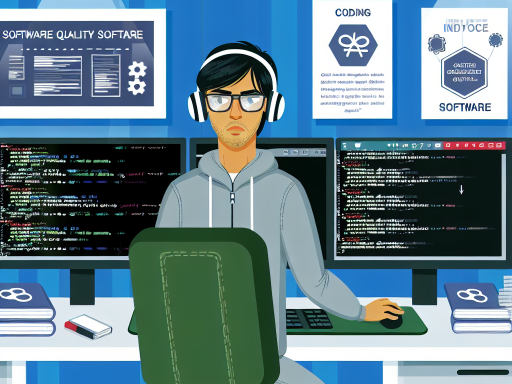Software Development Best Practices
Software Development Best Practices
Adopting software development best practices ensures efficient, reliable, and maintainable code.
These practices guide developers in creating high-quality software products.
Importance of Best Practices
1. Ensure Code Quality
Following best practices ensures code quality.
High-quality code is easier to read, maintain, and debug.
Key Practices:
- Write Clean Code: Use clear and consistent naming conventions.
- Comment Code: Add comments to explain complex logic.
- Avoid Redundancy: Eliminate duplicate code to reduce errors.
2. Improve Collaboration
Best practices improve collaboration among developers.
Consistent coding styles and documentation make teamwork more efficient.
Collaboration Tips:
- Use Version Control: Implement Git or other version control systems.
- Code Reviews: Conduct regular code reviews to maintain quality.
- Follow Coding Standards: Adopt team-wide coding standards.
Key Software Development Practices
1. Version Control
Version control tracks code changes over time.
It allows developers to revert to previous versions if needed.
Best Practices:
- Commit Often: Make small, frequent commits.
- Write Descriptive Messages: Include meaningful commit messages.
- Branching: Use branches to manage different features or fixes.
2. Test-Driven Development (TDD)
Test-driven development ensures code reliability.
Developers write tests before writing the actual code.
TDD Process:
- Write a Test: Create a test for the desired functionality.
- Write Code: Develop the code to pass the test.
- Refactor: Improve the code while ensuring the test still passes.
3. Continuous Integration and Continuous Deployment (CI/CD)
CI/CD automates the testing and deployment process.
It reduces errors and speeds up the development cycle.
CI/CD Practices:
- Automated Testing: Run tests automatically after every commit.
- Continuous Integration: Integrate code into the main branch frequently.
- Continuous Deployment: Deploy updates automatically to the production environment.
Maintainability and Documentation
1. Write Maintainable Code
Maintainable code is easy to update and debug.
Following best practices makes your code more resilient to future changes.
Tips:
- Modularize Code: Break code into small, reusable modules.
- Use Design Patterns: Implement design patterns for common problems.
- Refactor Regularly: Continuously improve code quality through refactoring.
2. Document Your Code
Proper documentation is crucial for maintainability.
It helps other developers understand your code and reduces onboarding time.
Documentation Tips:
- Inline Comments: Explain complex code segments with inline comments.
- README Files: Include a README file with project instructions.
- API Documentation: Document all public methods and classes.
Security Best Practices
1. Prioritize Security
Security should be a top priority in software development.
Implementing best practices helps protect against vulnerabilities.
Security Practices:
- Input Validation: Validate all user inputs to prevent injection attacks.
- Encryption: Encrypt sensitive data both in transit and at rest.
- Access Control: Implement strict access controls and authentication.
2. Regular Security Audits
Regular security audits identify potential vulnerabilities.
Addressing these issues promptly prevents security breaches.
Audit Steps:
- Review Code: Conduct thorough code reviews for security flaws.
- Penetration Testing: Simulate attacks to test your system’s defenses.
- Update Dependencies: Keep all libraries and frameworks up to date.
Conclusion
Following software development best practices ensures the creation of high-quality, maintainable, and secure software.
By focusing on version control, test-driven development, continuous integration, and security, developers can enhance collaboration, reduce errors, and deliver better products.
Prioritize these best practices to build robust software solutions and maintain a competitive edge in the ever-evolving tech industry.









